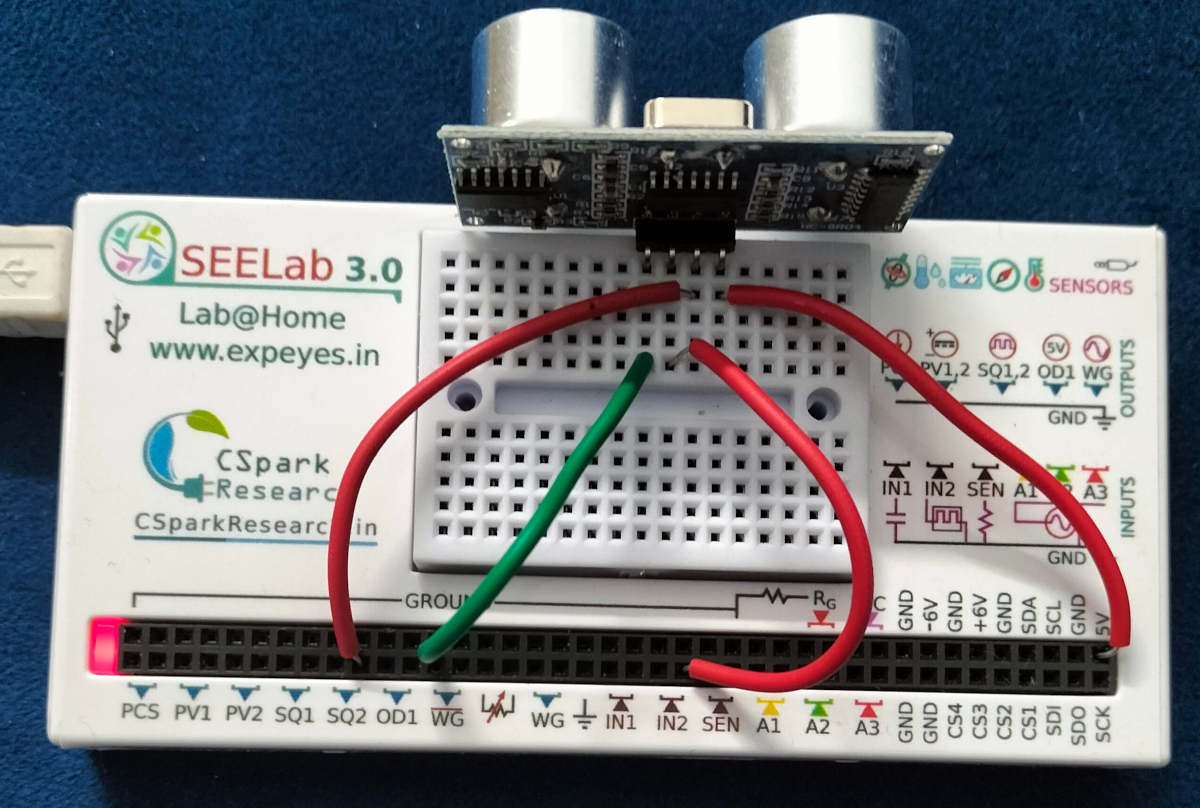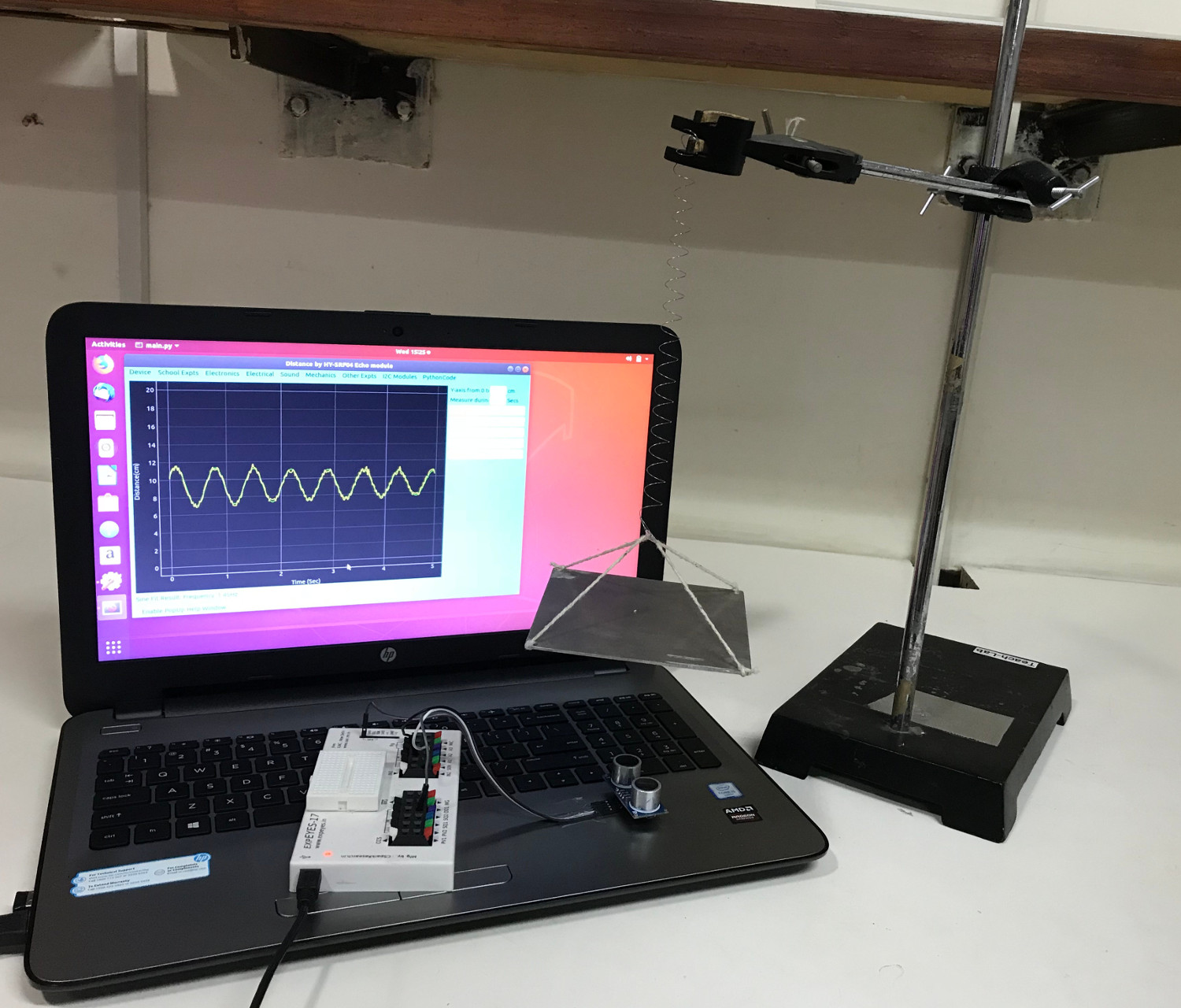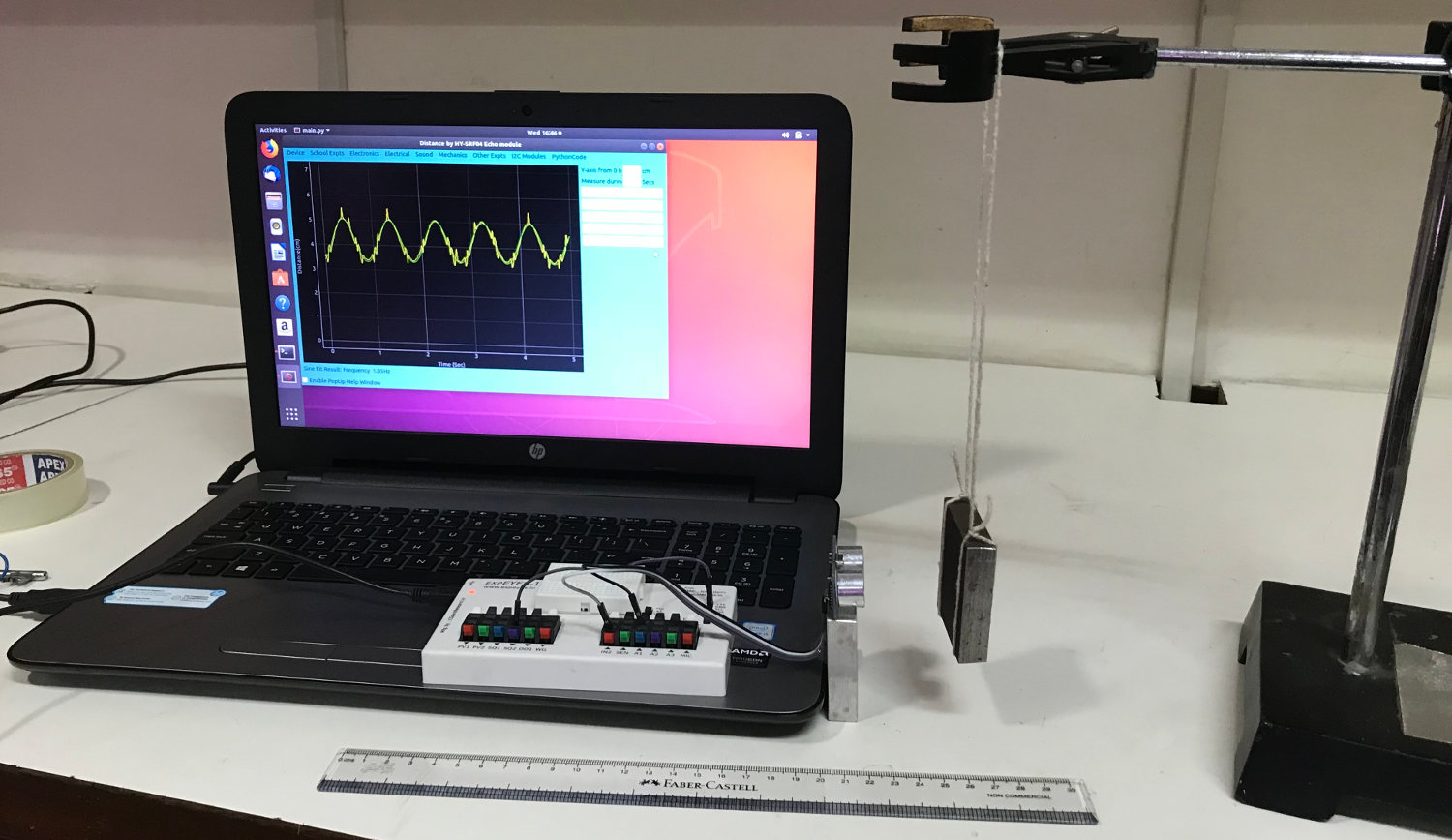
The connections are wired as shown in the figure below. An hard surface is placed in front of SR04 and moved back and forth. The distance from the sensor to the surface (that reflects the sound bursts from SR04) is recorded for 5 seconds. An area is selected and fitted using the sine function to get the frequency of oscillation. The results are displayed in the screenshot shown below.


The distance measurement using SR04 is done using
tm, dist = p.sr04_distance_time()
where tm is the system timestamp.
Python Program sr04.py measures the distance for around 5 seconds and saves the results to a file named ‘sr04.csv’. Download sample datafile ‘sr04.csv’.
Python Program sr04-analyse.py reads the data and mathematically fits it with a sinusoid to extract the time period. The code assumes that the distance changes periodically.

The period of oscillations of a pendulum also can be measured using SR04 connected to ExpEYES. The figure shows a pendulum with a rectangular bob, but one can use a spherical bob with a piece of paper (to provide a flat reflecting surface) pasted to it. The measured frequency is 1.05 Hz for a pendulum having a length of 22cm. One can calculate the value of acceleration due to gravity from this data.
